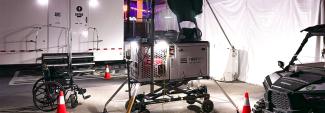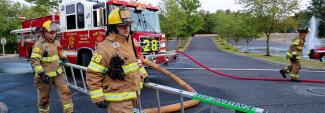Many of us know exactly where we were and what we were doing when the 9/11 attacks happened. I was commander of the SWAT team for the Phoenix Police Department, and the news came early morning in our local time zone. I jumped in my vehicle and drove straight to work, not knowing when, where, or if the next attacks would happen.
Beginning that day and for many weeks that followed, my fellow officers and I worked 12-hour shifts seven days a week to stay in front of the threat. We monitored Arizona’s critical infrastructure, nuclear station, and power supply.
The next month, Arizona hosted the World Series. It was the first national championship since the 9/11 attacks, and government warnings indicated terrorists could strike again. My job as tactical command was to make sure the World Series venue was secure and safe. This required coordination among a large swath of public safety and other government agencies, a complex task using all the different communication systems of the time.
From 9/11 to today
In the second game of the 2001 World Series, I listened to Ray Charles sing “God Bless America” and watched stealth fighter planes fly overhead. We staffed that game communicating with land-mobile radios.
Fast forward 20 years to a different stadium and a different game, and it’s a new world for public safety communications. Today the Green Bay Police Department staffs Green Bay Packers football games using FirstNet and benefits from an interoperable network available to all agencies, providing priority and preemption for first responders.
Even during big plays when network congestion is highest, FirstNet gives the Green Bay Police Department faster speeds, better data exchanges, and clearer calls. Because of FirstNet’s priority and preemption, officers can communicate amid a stadium full of fans livestreaming, texting, and posting on social media.
“The main reason we switched to FirstNet was the ability to communicate with our officers in the field during the game,” said Paul Ebel, Green Bay Police’s Investigative Commander who oversees special events, including Packers games. “The FirstNet devices totally outperform what we had.”
Out of tragedy, a public safety network is born
The tragedies of 9/11 revealed fundamental problems with communication systems used by our nation’s first responders. The radios relied on by police, fire, and paramedics did not easily operate across different agencies. Land and mobile phone lines were overwhelmed by a high volume of calls. First responders struggled to communicate with each other.
As a result of those challenges, the 9/11 Commission Report recommended establishing an interoperable nationwide network dedicated to public safety communications.
Building on the commission’s recommendation, the public safety community joined together to advocate before Congress for their own broadband network – one that would serve first responders’ unique communications needs. They advocated for a network that would provide interoperability and innovation to communicate with each other through disasters, large events, and everyday emergencies.
As a result, a law was passed allocating $7 billion and 20 megahertz of broadband spectrum to establish a network for the nation's public safety workers. It also established the First Responder Network Authority, or FirstNet Authority, to ensure the buildout, operation, and maintenance of that network.
Now, public safety’s nationwide broadband network – FirstNet – is a reality. FirstNet has supported law enforcement in almost every type of emergency or incident, from sporting events, natural disasters, and search and rescue, to coping with and confronting the COVID-19 pandemic. And public safety has been quick to adopt the network – reaching more than 2.2 million network connections this year.
Hear directly from Harry Markley and other FirstNet Authority experts in fire service, emergency management, 9-1-1, and EMS by signing up for our quarterly discipline newsletters.




















